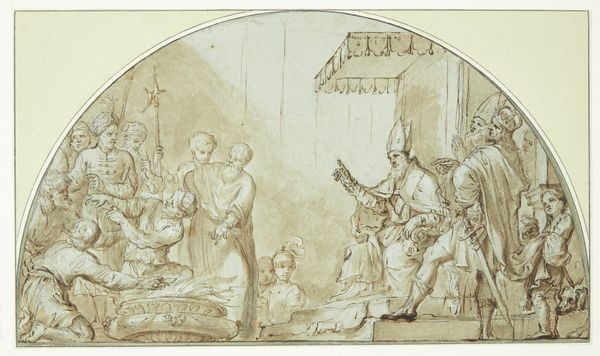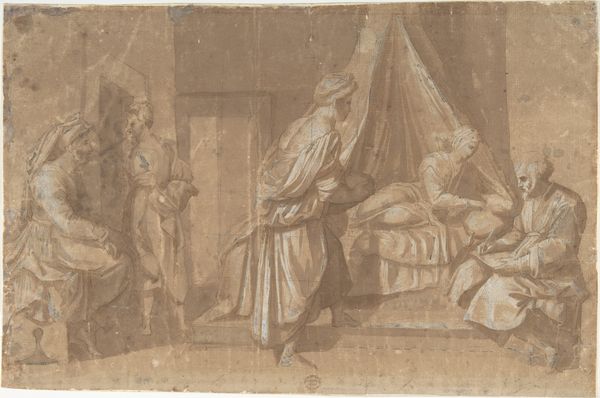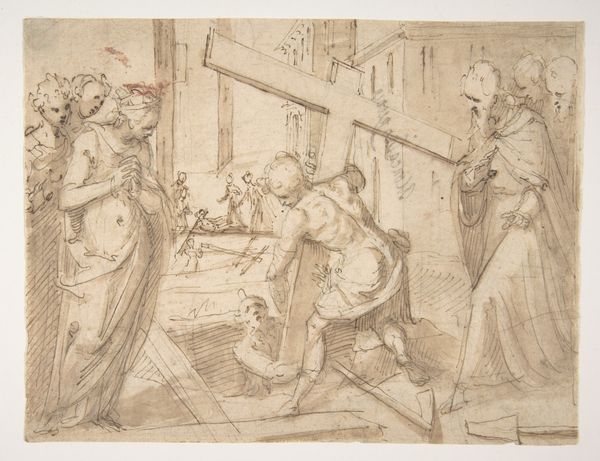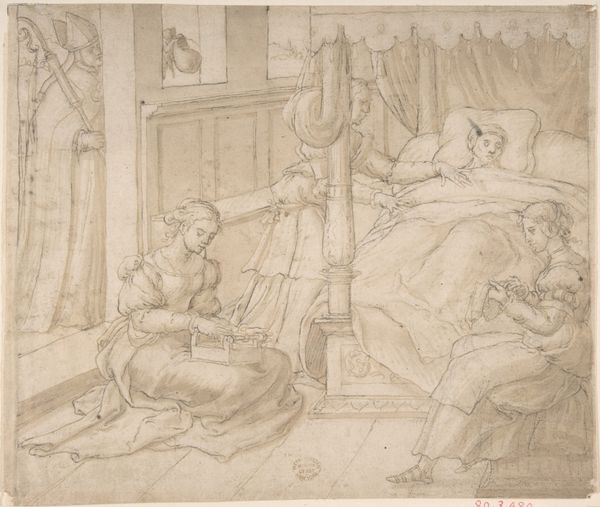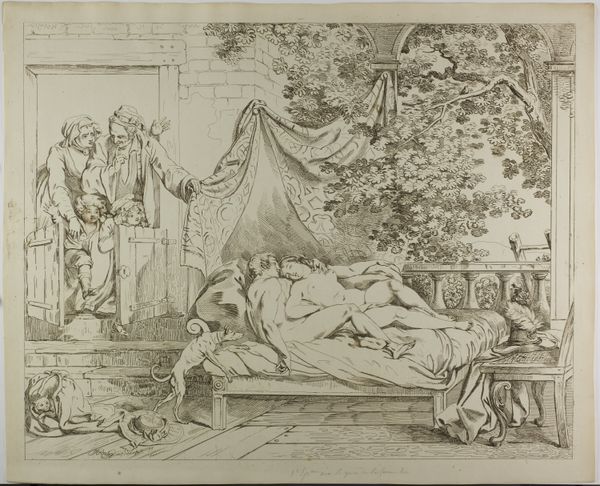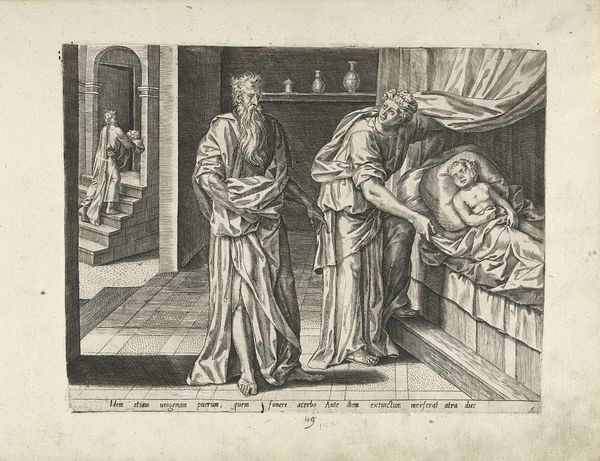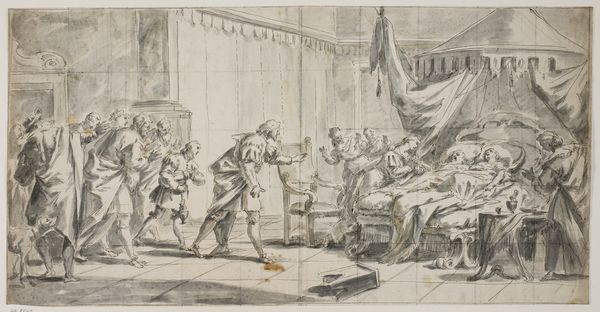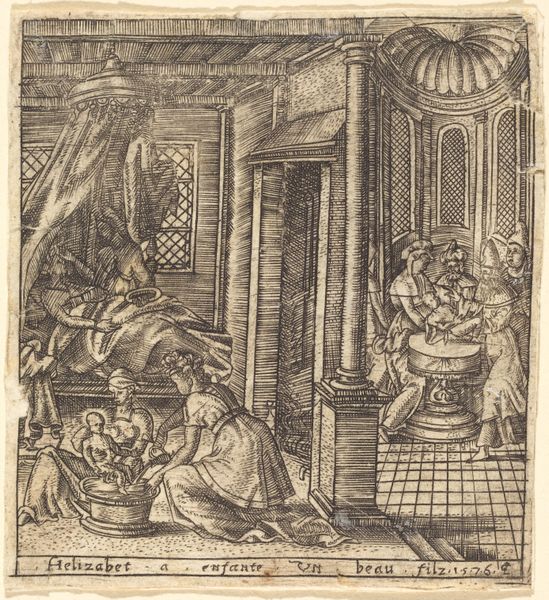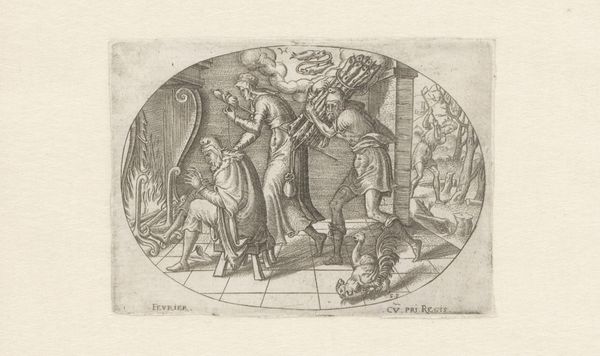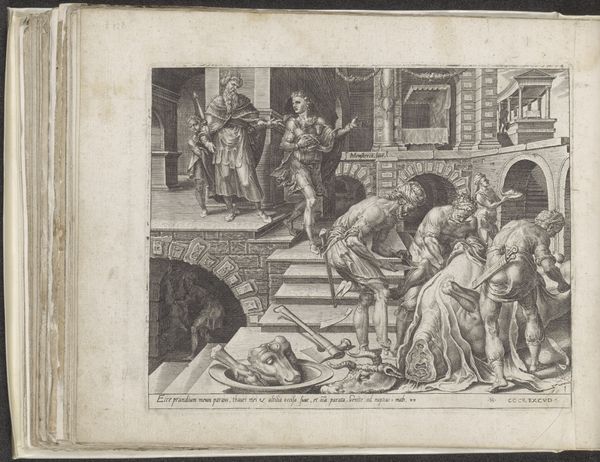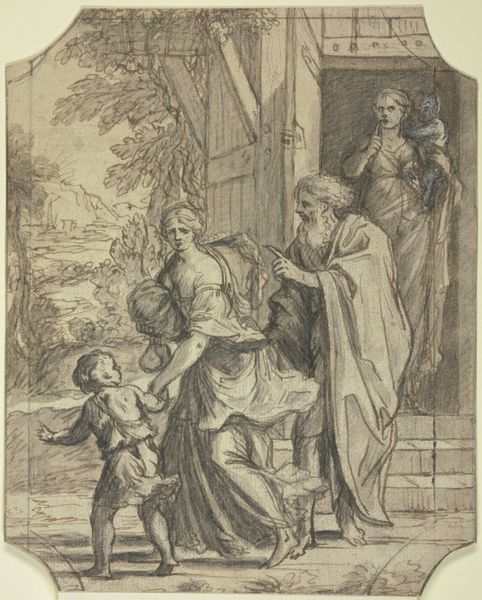
drawing, paper, ink
#
drawing
#
narrative-art
#
baroque
#
figuration
#
paper
#
ink
#
sketchbook drawing
#
14_17th-century
#
history-painting
Copyright: Public Domain
Curator: At first glance, there's a palpable sense of serenity despite the apparent suffering depicted. Editor: Indeed. The work we're viewing, "Eine Heilige krank im Bette liegend, von Engeln getröstet"—which translates to "A Saint Lying Sick in Bed, Comforted by Angels"—is an ink drawing on paper by Pieter de Jode I. Currently held at the Städel Museum, it showcases de Jode's skill in Baroque figuration. Curator: The title prepares us, of course, but even without that context, the imagery immediately speaks to themes of comfort and divine intervention. The contrast between the darkness around the figures and the lightness emanating from them reinforces that. The sick woman being attended by angels is very prominent, surrounded by almost tangible care. Editor: For me, the halos and the wings are primary visual cues that link this image to centuries of art and belief. The angelic presence visually embodies divine grace. Note also the dome-shaped structure in the outdoor scene – is it a temple? Its presence evokes an order or belief system larger than the domestic interior. Curator: I am drawn to the positioning of the figures, especially that prone figure in the bottom left foreground: it's interesting to consider what socioeconomic disparities and historical power dynamics might have contributed to this positioning of the suffering or needy as physically below more elevated figures. Is this a statement about the role of charity or about reinforcing existing societal structures? Editor: Perhaps both interpretations hold weight. The inclusion of that figure creates a layered reading, highlighting a need that extends beyond the saint’s chamber. The artist seems to be playing with symbols of power, care, and divine comfort all within one space. Even the angels differ—their expressions range from serene support to gentle compassion. It isn’t a uniform, cookie-cutter depiction of divine solace, but a diverse spectrum of emotional responses. Curator: Right, it’s about considering the narratives *around* that central theme. The drawing allows for critical reflections on the historical and social forces shaping representation of illness, piety, and aid. Editor: Looking at how symbols were so carefully rendered—every halo, every fold of drapery seems steeped in meaning—allows me to access the past and understand how people envisioned transcendence. It really creates a space for introspection, regardless of personal faith or belief.
Comments
No comments
Be the first to comment and join the conversation on the ultimate creative platform.
